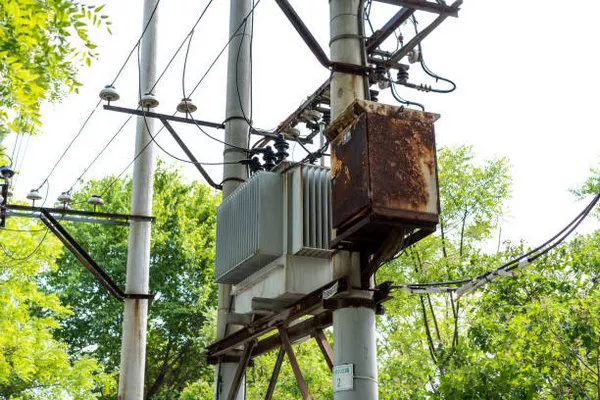An auto transformer is a type of electrical transformer that shares some fundamental characteristics with conventional transformers but has distinct advantages and specific applications due to its unique construction and operational principles. This article aims to provide a comprehensive understanding of how an auto transformer works, its components, benefits, and typical uses in the field of electrical engineering.
Principles of Operation
At its core, a transformer is an electrical device designed to transfer electrical energy between two or more circuits through electromagnetic induction. A traditional transformer typically consists of two windings: a primary winding and a secondary winding, each wound on a laminated iron core. The primary winding receives alternating current (AC), which creates a magnetic field in the core, inducing a voltage in the secondary winding. The voltage can be increased (stepped up) or decreased (stepped down) based on the turns ratio of the windings.
An auto transformer differs from this conventional design in a significant way: it uses a single continuous winding that acts as both the primary and secondary sides of the transformer. This winding is tapped at some intermediate point to provide the desired voltage transformation. The primary voltage is applied across the entire winding, while the secondary voltage is taken from the tapping point to one end of the winding.
Construction of Auto Transformers
The construction of an auto transformer is simpler than that of a two-winding transformer due to the single winding used. Here are the key components:
Single Winding: The auto transformer has one continuous winding, typically made of copper or aluminum, which is wound on a laminated core.
Tapping Point: A crucial feature of the auto transformer, the tapping point divides the winding into two sections. This point determines the voltage ratio between the primary and secondary circuits.
Core: The core, usually made of silicon steel laminations, serves to concentrate the magnetic field and reduce losses.
Working Mechanism
The working mechanism of an auto transformer can be explained with the help of a simple example. Suppose an auto transformer is designed to step down the voltage from 240V to 120V. The winding is tapped at the midpoint to achieve this transformation.
Primary Side: When 240V AC is applied to the entire winding, it induces a magnetic field in the core.
Secondary Side: By connecting the load between the tapping point (which is at 120V) and one end of the winding, the voltage across the load will be 120V.
The voltage transformation in an auto transformer depends on the turns ratio of the winding. If the total number of turns is N and the tapping point divides the winding into N1 and N2 turns, the voltage ratio is given by:
V2/V1= N1/N2
where V1 is the primary voltage, and V2 is the secondary voltage.
Advantages of Auto Transformers
Auto transformers offer several advantages over traditional two-winding transformers:
Material Efficiency: Since an auto transformer uses a single winding, it requires less copper or aluminum, reducing material costs and weight.
Cost-Effective: The reduced material and simpler construction translate to lower manufacturing costs.
Higher Efficiency: With fewer windings, there are lower resistive losses, leading to higher efficiency.
Better Voltage Regulation: Auto transformers exhibit improved voltage regulation, making them suitable for applications requiring stable voltage levels.
Applications of Auto Transformers
Auto transformers are versatile and find applications in various fields, including:
Power Distribution: They are used in power distribution systems to step down high transmission voltages to lower distribution voltages, thereby enhancing efficiency and reducing losses.
Railway Electrification: In railway systems, auto transformers help in stepping down the high voltage used for transmission to the lower voltage required for train operation.
Motor Starting: Auto transformers are employed in motor starting applications to reduce the inrush current during the startup of large induction motors.
Voltage Regulation: They are used in voltage regulators to maintain a stable voltage supply in electrical networks.
Audio Equipment: Auto transformers are used in audio systems to match the impedance between different components, ensuring optimal performance.
Limitations and Considerations
While auto transformers offer numerous benefits, they also have some limitations and considerations:
Isolation: Unlike traditional transformers, auto transformers do not provide electrical isolation between the primary and secondary circuits. This can be a safety concern in some applications.
Voltage Range: The voltage transformation range of auto transformers is limited. They are more suitable for applications requiring a small to moderate voltage change.
Fault Tolerance: In the event of a winding failure, both primary and secondary circuits are affected, which can lead to more severe consequences compared to traditional transformers.
Safety Measures
Due to the lack of electrical isolation, it is crucial to implement safety measures when using auto transformers:
Proper Grounding: Ensure the auto transformer is properly grounded to prevent electrical shocks.
Overload Protection: Use protective devices like fuses or circuit breakers to protect against overload conditions.
Regular Maintenance: Conduct regular inspections and maintenance to detect and address any potential issues early.
See Also DISTRIBUTION TRANSFORMERS: TYPES, FUNCTIONS, AND APPLICATIONS
Conclusion
Auto transformers are a vital component in electrical engineering, offering an efficient and cost-effective solution for voltage transformation. Their unique design, which utilizes a single winding with a tapping point, provides material and cost savings while delivering higher efficiency and better voltage regulation. However, the lack of electrical isolation and limited voltage range should be considered when selecting an auto transformer for a specific application. By understanding their working principles, advantages, and limitations, engineers can effectively integrate auto transformers into various electrical systems, ensuring optimal performance and reliability.

